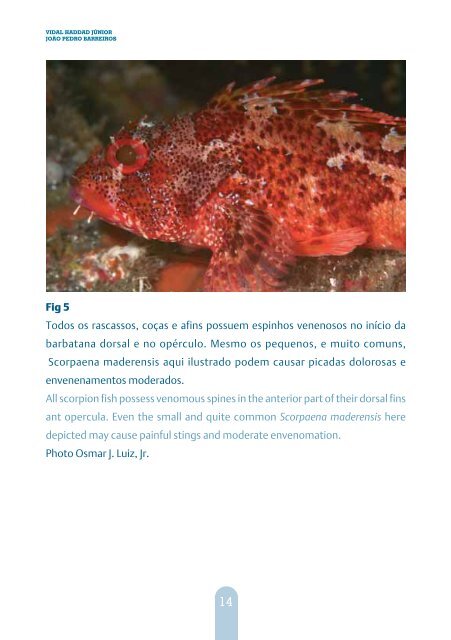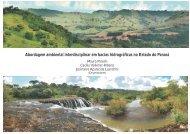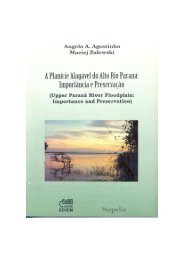You also want an ePaper? Increase the reach of your titles
YUMPU automatically turns print PDFs into web optimized ePapers that Google loves.
ANIMAIS MARINHOS DOS AÇORES PERIGOSOS E VENENOSOS<br />
DANGEROUS AZOREAN MARINE ANIMALS A FIELD GUIDE<br />
Alguns peixes podem causar traumas<br />
importantes através dos dentes, espinhos<br />
ou ferrões. Na maioria das vezes,<br />
estes ferimentos são causados por<br />
descuido da vítima, especialmente de<br />
mergulhadores e banhistas. Os tubarões<br />
são uma excepção, embora os<br />
ataques sejam quase inexistentes. Nos<br />
Açores estão registadas pelo menos 3<br />
espécies reconhecidamente perigosas,<br />
que são o tubarão-branco (Carcharodon<br />
carcharias), o tubarão-touro<br />
(Carcharhinus leucas) e o tubarão-tigre<br />
(Galeocerdo cuvieri), embora outras<br />
espécies também possam causar acidentes<br />
nomeadamente quando em<br />
situações de naufrágio em ambientes<br />
oceânicos. Nestes casos incluem-se o<br />
mako ou rinquim (Isurus oxyrhynchus),<br />
a tintureira ou tubarão-azul (Prionace<br />
glauca), o marracho ou tubarão-das-<br />
Galápagos (Carcharhinus galapagensis)<br />
e, principalmente, o tubarão–de–pontas–brancas–oceânico<br />
(Carcharhinus<br />
longimanus).<br />
Some fish may cause important trauma<br />
through theeth, spines or stings.<br />
Almost allways, the wounds are<br />
caused by the victim’s distraction,<br />
especially with divers and bathers.<br />
Sharks, however, are an exception<br />
although attacks are almost non–existent.<br />
All three most dangerous shark<br />
species are known to occurr in Azorean<br />
waters albeit with extreme rarity: the<br />
great white (Carcharodon carcharias),<br />
the bull shark (Carcharhinus leucas) and<br />
the tiger shark (Galeocerdo cuvieri).<br />
Nevertheless, other species may cause<br />
accidents, namely after sea wrecking<br />
in offshore oceanic environments,<br />
such as the mako (Isurus oxyrhynchus),<br />
the blue shark (Prionace glauca), the<br />
Galapagos shark (Carcharhinus galapagensis)<br />
and especially the oceanic white<br />
tip Carcharhinus longimanus).<br />
15






